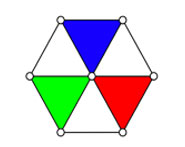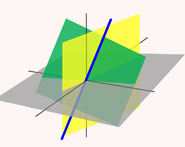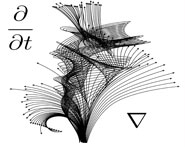


 تاريخ الرياضيات
تاريخ الرياضيات
 الرياضيات في الحضارات المختلفة
الرياضيات في الحضارات المختلفة 
 الرياضيات المتقطعة
الرياضيات المتقطعة
 الجبر
الجبر
 الهندسة
الهندسة 
 المعادلات التفاضلية و التكاملية
المعادلات التفاضلية و التكاملية 
 التحليل
التحليل
 علماء الرياضيات
علماء الرياضيات |
Read More
Date: 30-12-2015
Date: 1-1-2016
Date: 11-1-2016
|
Throughout human history man has invented devices to make repetitive tasks, such as mathematical calculation, easier. For much of history, this was difficult. The advent of methods, which progressed to machines, to help with this dilemma made life much easier for many.
Early Calculators
The first aids in counting were notched sticks and counting cords, simple tools used to retain numerical information over time and distance. These devices did not perform any mathematical operations.
A major revolution came with the abacus. This device allowed both arithmetical operations and the ability to store a fixed sum, which was represented by a given pattern of beads. The abacus, which is still in use today, was fast and extremely useful in the hands of a trained user.
The French mathematician Blaise Pascal is credited with inventing the mechanical calculator in 1642, based on a stylus and wheel design. In 1820, based on Pascal’s design, Thomas de Colmar invented the “Arithmometer.”
In his design, de Colmar took Pascal’s wheels and turned them on their sides. They were made wider, and tally marks were put on the outside of the drum.
The first adding machine that printed results on tape was introduced around 1872. When first introduced, many of the adding machines were hand-driven, but later models had electric motors. One of the more impressive of the early adding machines was the Burroughs Class 1/Model 9.
It was 19 inches deep, over a foot tall, and weighed more than 63 pounds.
In 1911, the Monroe LN was introduced. Previously adding machines had been separate from those that performed multiplication and division.
The Monroe LN combined these two machines into one.
As the world entered the 1950s, new progress in electronic circuitry and data processing techniques began to pave the way for reasonably sized electronic calculators. At this time, electronic adding machines were common, but most designs were based on the technology of the mechanical calculator, with electricity used to power the drum or pinwheel movement. The calculators of the 1960s were desktop sized, utilized thousands of separate
electronic components, and were costly to assemble.
Electronic Calculators
The first mass-produced electronic calculators often had retail prices of nearly one thousand dollars. The high cost was, in part, because the technology was so new, and materials were at a premium.
A breakthrough came in 1964 when Victor Business Machines contracted with General Microelectronics to develop an integrated circuit-based desktop electronic calculator. Following this, Texas Instruments began to produce an integrated circuit-based, hand-held calculator called the “CalTech.” It performed the four basic arithmetical operations.
Modern Calculators
The calculators of today have come a long way from where they started.
Today, calculators can perform a range of complicated functions as well as basic ones. Commonly, people use calculators to ease the burden of performing routine mathematical calculations, such as balancing checkbooks.
Hand-held calculators now allow people to do calculations anywhere, with little risk of error in the results.
______________________________________________________________________________________________
Reference
Before HP Calculators. The Museum of HP Calculators. June 2001. <http://www.hp- museum.org>.



|
|
|
|
للعاملين في الليل.. حيلة صحية تجنبكم خطر هذا النوع من العمل
|
|
|
|
|
|
|
"ناسا" تحتفي برائد الفضاء السوفياتي يوري غاغارين
|
|
|
|
|
|
|
نحو شراكة وطنية متكاملة.. الأمين العام للعتبة الحسينية يبحث مع وكيل وزارة الخارجية آفاق التعاون المؤسسي
|
|
|